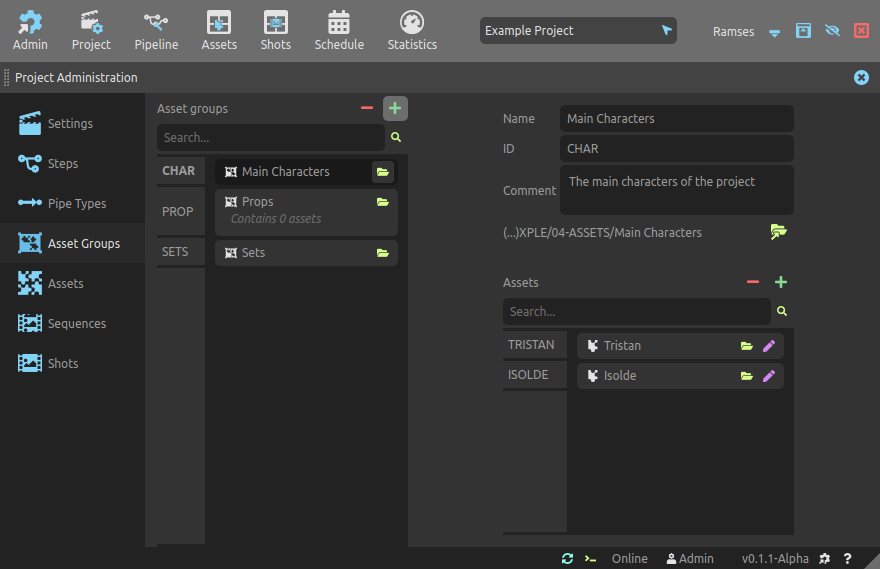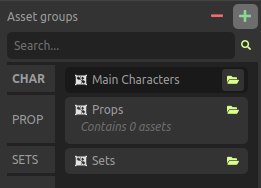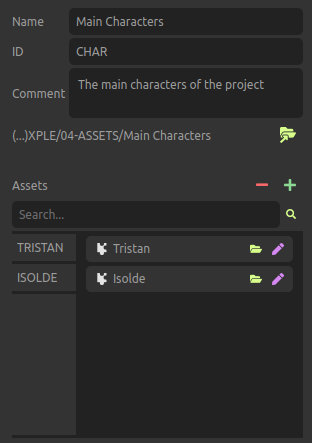 Asset group settings
Asset group settings

This panel is used to list and manage all the asset groups of the project. Asset groups are used to help you sort and filter the assets of the project. They’re also used in the Ramses Tree.
List

The list on the left lists all the asset groups of the project, and you can use the Search field to filter them by name or ID.
When changing the size of the rows in the list, more details about each asset group can be displayed. The folder button on the top right corner for each asset group in the list opens the asset group folder in your file explorer.
Use the button to create a new asset group (either from scratch or using a template). The
button removes the selected asset groups from the project1.
You can use the [Shift + A] shortcut key to quickly add new asset groups.
You can use the [DEL] or [Shift + X] shortcut key to quickly remove selected asset groups.
You can scroll all lists using [Middle click] as well as the [Mouse wheel].
Edition

- Name is the asset group’s display name. It can’t be changed after the asset group folder has been created.
- ID is the unique identifier which is used in the files and folders (see the Ramses Tree section). Read the Ramses naming conventions to learn how IDs and names have to be formatted.
- Comment can be any text associated to the asset group and describing it.
- The
button opens the asset group folder in your file explorer. This folder contains the individual asset folders.
- Assets contained in the group are listed in the bottom section.
- The
button instantly creates a new asset contained in the current group.
- The
button removes the selected assets from the project1. You can also use the
[DEL]key. - From the list, you can use the
folder button to quickly open a specific asset folder, and the
edit button to edit them in a side docked panel. Read the asset settings section for more details about asset edition.
- The
Tip
To change the name of the asset group, you can temporarilly rename its corresponding folder, change the name in Ramses, and finally rename the folder after the new name.